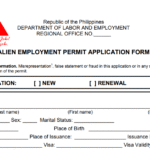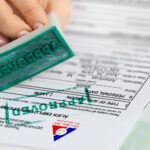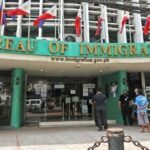With its low cost of living and English-speaking population, the Philippines can be an appealing destination for foreign professionals. A common question among foreign visitors who wish to extend their stay in the Philippines is whether they can convert their tourist visa to a long-term work visa. We’ll outline the possible pathways for tourist visa holders to obtain a long-term work visa.
Can a Tourist Visa Be Converted to a Work Visa?
In the Philippines, a tourist visa, officially known as the 9(a) Temporary Visitor’s Visa, is designed for short-term stays, typically up to 59 days, extendable to a maximum of one to three years depending on the foreigner’s nationality. However, Philippine immigration laws do not permit a direct conversion of a 9(a) tourist visa to a work visa, such as the 9(g) Pre-Arranged Employment Visa.
No, you cannot convert your tourist visa to a work visa. Instead, foreign nationals must apply for a work visa separately while legally in the country under a tourist visa. This process involves securing a job offer and meeting specific requirements set by the Bureau of Immigration (BI) and the Department of Labor and Employment (DOLE).
How to Secure a Work Visa
Securing a work visa in the Philippines requires careful planning and compliance with immigration regulations. Here’s a step-by-step guide to obtaining a 9(g) Pre-Arranged Employment Visa (the standard work visa for foreign nationals):
- Secure a Job Offer: Find employment with a Philippine-based company willing to sponsor your visa.
- Obtain an Alien Employment Permit (AEP): Apply for an AEP through DOLE, which verifies that no Filipino citizen is available or qualified for the position. Required documents typically include:
- Valid passport
- Completed application form
- Employment contract or job offer
- Company registration documents (e.g., SEC/DTI, mayor’s permit)
- A photocopy of BIR Form 1904 or 1902, stamped received by the BIR, showing the applicant’s Taxpayer Identification Number (TIN), or alternatively, a BIR certification or a copy of the e-registration.
- Photocopy of employee’s and employer’s IDs
- Justification for hiring a foreign worker. This may include a copy of the job vacancy publication in a widely circulated newspaper, along with a notarized affidavit confirming that no Filipino applicant was qualified or considered for the role.
- Understudy Training Program (UTP) or Skills Development Program (SDP) Plan for applicants working in priority sectors like manufacturing or information technology (if applicable)
- Economic Needs Test (ENT) for applicants in a priority sector or whose role may significantly affect the labor market (if applicable)
- Other required legal documents. Depending on the nature of your industry, you may be required to submit copies of permits from various government agencies.
- Payment of processing fees
- Apply for the 9(g) Visa: Submit the visa application to the Bureau of Immigration. Requirements include:
- Joint letter request addressed to the Commissioner from the applicant and the petitioner
- Duly accomplished CGAF for Non-Immigrant Visa
- Passport bio-page and latest admission with a valid authorized stay
- Proof of Employment, which includes an Employment Contract, Secretary’s Certificate of Election, Appointment or Assignment of applicant, or equivalent document, with details of exact compensation, duration of employment, and a comprehensive description of the nature and scope of the applicant’s position in the company
- Petitioner’s latest Income Tax Return (ITR) with the corresponding proof of payment (official receipt, bank teller’s validation slip, BIR’s eFPS payment details print-out, or other similar evidence)
- Business Registration Documents (SEC/DTI certificate, Mayor’s Permit, etc.)
- Alien Employment Permit (AEP) issued by the Department of Labor and Employment (DOLE), and actual publication of the applicant’s approved AEP, or in the absence thereof, a Certificate of Publication issued by the Publisher
- Notarized certification of the number of foreign and Filipino employees from the petitioning company (preferred format can be downloaded at the BI website)
- Special Temporary Permit for an applicant practicing a regulated profession under the Professional Regulation Commission (PRC), if applicable
- BI Clearance Certificate
- Bureau of Quarantine Medical Clearance, if the applicant is a national of any of the countries listed under Annex “A” of Immigration Operations Order No. SBM-14-059-A who arrived in the Philippines on or after June 2014
- Pay Fees and Comply with Requirements: Expect to pay visa fees, which vary based on nationality and duration (usually 1–3 years). Ensure all documents are complete to avoid delays.
- Await Approval: Once approved, the 9(g) visa allows legal employment in the Philippines, typically valid for the duration of the employment contract.
Processing times typically take a few months, but in many cases, a Provisional Work Permit (PWP) can be issued while waiting for the full visa. A PWP allows you to begin working immediately while your visa is still being processed.
Other Visa Types to Consider
Beyond the 9(g) Pre-Arranged Employment Visa, foreign nationals seeking long-term employment or investment opportunities in the Philippines can explore specialized non-immigrant and investment-related visas.
Here are the alternatives:
- PEZA Visa (a type of Special Non-Immigrant Visa under E.O. 226): Designed for foreign nationals employed by or investing in companies registered with the Philippine Economic Zone Authority (PEZA). This visa requires a minimum investment of USD 150,000 or employment in a PEZA-registered enterprise, offering residency and work authorization for up to two years, renewable.
- 47(a)(2) Special Non-Immigrant Visa (Now known as the PEZA Visa): Available for employees of companies under special laws, such as those in ecozones or in priority sectors. It requires employer sponsorship and is valid for one to two years, renewable, with specific eligibility set by the Bureau of Immigration.
- Special Investor’s Resident Visa (SIRV): Aimed at investors contributing at least USD 75,000 to a qualified Philippine business or government bonds. This visa grants indefinite residency but does not automatically permit employment unless paired with a work permit.
- The Special Visa for Employment Generation (SVEG) is a Philippine visa designed for foreign nationals who significantly contribute to the economy by generating substantial employment opportunities. Administered by the Bureau of Immigration, it targets investors or business owners whose enterprises employ at least ten Filipinos in a lawful and sustainable business.
Each visa has unique eligibility criteria and application processes. Contact us for more information and legal guidance.
Summary
While you cannot directly convert a tourist visa into a work visa, there are ways for a foreign national to find employment in the Philippines. You can enter the country under a tourist visa and then separately apply for a work visa if you meet the requirements. Obtaining a Provisional Work Permit (PWP) will allow you to start working immediately while waiting for your work visa to finish processing.
Are You Planning to Work in the Philippines? Get Expert Guidance Here
Let Work Visa Philippines guide you through the process. Our immigration lawyers can help obtain a visa, work permit, and other legal documents from the appropriate government agencies. We’ll make sure you’re fully compliant so you can focus on enjoying your stay in the Philippines.
Reach out today, and we’ll guide you every step of the way.
- Contact Us Here
- Fill Out the Form Below
- Call us at +63 (02) 8540-9623






